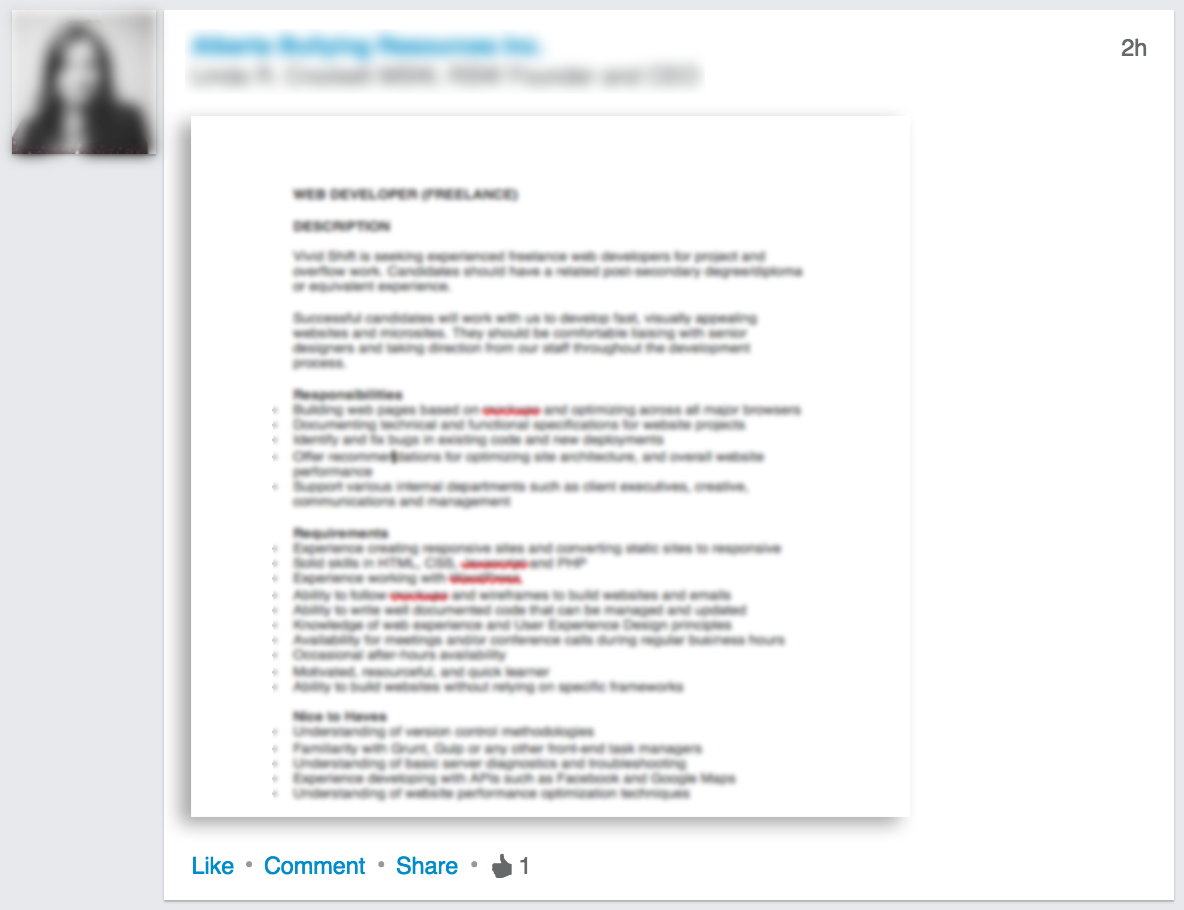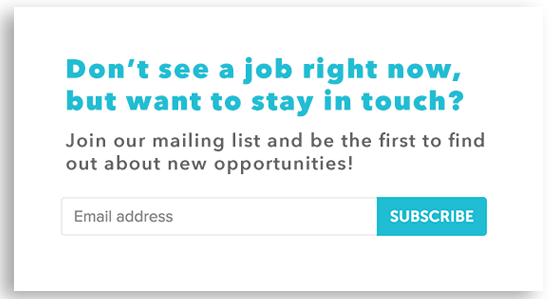These Recruitment Tactics Are Undermining Your Credibility

Social media can be a great tool for recruitment, building your brand, or communicating with potential candidates. Sometimes, however, making certain mistakes can cost you credibility. Here are five common errors that organizations make when recruiting, why they make you look unprofessional, and what to do instead!
Mistake #1 – Not Using a Personal LinkedIn Profile / Company Page Properly
If you’ve ever done a search for people on LinkedIn, you may have come across an odd result — some companies have actually created a personal profile using their company name, and then actively seek “connections”. This is not a good method. First, you are conveying the impression that your company doesn’t know how to properly use LinkedIn. Secondly, if you request connections, it comes across as very “spammy”– without an actual person attached to the profile, you’re essentially a stranger. If you’re waiting for people to connect with you, this could take a long time – it’s unlikely that strangers would add you to their networks, at least not quality contacts. This means you’re missing a huge opportunity to create a sustainable following. With an official company page, people can easily decide to follow your company, and consequently see the updates you post in your news feed. Using a personal profile as a company page can also be risky — it contravenes the LinkedIn terms and therefore could be reported and removed, meaning all your connections would be lost.
What to do instead:
Build out your official LinkedIn company page so it’s up-to-date, visual and provides a compelling overview of your organization. Post regular updates to your company page, then share them as an individual with your network. Not only will you appear more professional, but you’ll be building your LinkedIn following as your network gets exposed to your company page.
Mistake #2 – Using Hard-to-Read Images for Job Postings
You have a job posting to share, but often it’s a Word Document or PDF. What do you do? Many will opt to create a small image or take a screenshot and post it on LinkedIn. This frustrates job seekers who can’t clearly see the information, makes the job posting very hard to find (your ‘post’ isn’t searchable) and looks amateur.

What to do instead:
Simply use your LinkedIn update to share the link, rather than trying to include all the details. Ideally, this will link to further information that is hosted on your company’s website. Use eye-catching visuals to announce job openings and save the long-form description for the page you’re linking to instead. These images should align with the brand and look of your organization, and be kept as simple as possible. We’re more likely to click on visually appealing images that invite us to learn more.
Mistake #3 – Bulk Emails and Auto-Replies
Nothing pains us more than seeing mass-sent emails that have nothing to do with the person they’re being sent to. If you’ve been on LinkedIn for even a week, you’re likely to have received an InMail from a recruiter offering a unique opportunity for IT professionals or Engineers in Dubai. If you happen to be an HR professional working in Canada, it becomes apparent that you’re not exactly special – this can be a huge turnoff and damages your brand immensely. While your company may not be using such an extreme method, it comes across the same way when a potential candidate receives something that’s not personally valuable to them.
Auto reply messages on Twitter do the same damage. Why? Because that message isn’t for the person you’re sending it to–it’s not personal, and it’s annoying to receive.
What to do instead:
If you’re looking to build genuine relationships, want to show potential candidates you’re a good place to work, or that you’re different–think about it from their perspective. Try engaging potential candidates in an actual conversation. When someone follows your company on Twitter, instead of sending them an automated message to check out your Careers site, see what they’re about and engage with them. It may take more time, but in the long run it will pay off more than any automated message.
Mistake #4 – Not Communicating with Declined Job Seekers
So the second round of interviews has been completed and the successful candidate has been chosen. Or, maybe you’ve decided to go in a new direction and the position no longer exists. There are many reasons why someone would be rejected, but the question is what to do next? Some companies end the relationship there. Some have a standardized email. Others call the candidate back to gracefully let them know they haven’t been chosen — but all of these methods are leaving a huge opportunity behind.
What to do instead:
Many of these declined job seekers had the skills, aptitude or experience to merit a job interview in the first place. What if they could apply for other opportunities later? What if you could keep in touch with them and actually improve your company’s image at the same time? Consider adding these individuals to a list and planning regular communication. Alert them of new job opportunities before they’re posted, keep them informed about company changes or that exciting merger that just went through. When it comes to your next recruiting cycle, you’ll find it easier and more cost-effective than developing an audience from scratch.

Mistake #5 – Using Your Social Media Accounts As a One-Way Tunnel of Information
Often we’ll see company Twitter feeds that simply serve as a one-way chute of job postings, company information or blog posts. While Twitter is a valid channel to share information, it doesn’t come across well to potential candidates (or customers!) when everything is about you.
What to do instead:
Carve out some time to engage with your community (aka potential candidates). Having followers on Facebook or Twitter is utterly useless if you’re not ever engaging with them. Sharing your latest job post, then logging off isn’t going to build any type of rapport, and it ends up appearing very self-serving. Try asking a follower about something they posted, re-tweeting a relevant article or providing feedback on something somebody shared. Ask your followers a question, then show a genuine interest in the responses. You’ll find your community grows in size and engagement, and the next time you post an update, chances are, people will actually care.
—
Vivid Shift is a recruitment marketing company focused on helping organizations attract employees, students or volunteers. If you’d like help with your social recruiting strategy or want advice on how to create compelling content and start truly engaging potential candidates, we’d love to talk to you.

